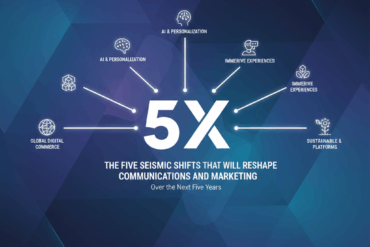By Janita Pannu
When was the last time you felt like a brand truly understood you? Chances are it wasn’t because of a statistic or product launch, but because of a story.
Neuromarketing proves that storytelling is not just a creative endeavour, but a scientific tool for building loyalty through emotion.
Storytelling images the limbic nervous system, which is where the brain makes emotions. A driving force for how we make decisions. Unlike facts and figures, stories can trigger feelings of joy, trust or nostalgia, creating long-lasting connections with businesses and brands.
• Emotional impact: Narratives can activate the amygdala and associate positive feelings with a brand.
• Memory enhancement: A structured story with an arc can make it easier to encode long-term memory.
• Trust and connection: When a brand tells a story that resonates with a customer’s value or their personal experiences, it fosters trust and can build a deeper relationship.
Marketing leaders today have the tools to measure the impact of storytelling on a neurological level.
• EEGs and fMRI scans can show us how consumer brains react to narrative elements in real time.
• Facial coding analysis can show us micro-expressions, so marketers can decode our emotional reactions to videos and images.
Great storytelling is not accidental, it’s engineered.
Creating characters that are relatable can evoke an emotional investment. Think of Apple’s iconic ad “Here’s to the crazy ones” that celebrates people who defy convention.
Emotional arcs with conflict, resolution and emotional highs and lows are easy to remember; think of Coca-Cola’s “Share a Coke” campaign for personal moments to create emotion.
When was the last time you felt like a brand truly understood you? Chances are it wasn’t because of a statistic or product launch, but because of a story.
Neuromarketing proves that storytelling is not just a creative endeavour, but a scientific tool for building loyalty through emotion.
Storytelling images the limbic nervous system, which is where the brain makes emotions. A driving force for how we make decisions. Unlike facts and figures, stories can trigger feelings of joy, trust or nostalgia, creating long-lasting connections with businesses and brands.
• Emotional impact: Narratives can activate the amygdala and associate positive feelings with a brand.
• Memory enhancement: A structured story with an arc can make it easier to encode long-term memory.
• Trust and connection: When a brand tells a story that resonates with a customer’s value or their personal experiences, it fosters trust and can build a deeper relationship.
Marketing leaders today have the tools to measure the impact of storytelling on a neurological level.
• EEGs and fMRI scans can show us how consumer brains react to narrative elements in real time.
• Facial coding analysis can show us micro-expressions, so marketers can decode our emotional reactions to videos and images.
Great storytelling is not accidental, it’s engineered.
Creating characters that are relatable can evoke an emotional investment. Think of Apple’s iconic ad “Here’s to the crazy ones” that celebrates people who defy convention.
Emotional arcs with conflict, resolution and emotional highs and lows are easy to remember; think of Coca-Cola’s “Share a Coke” campaign for personal moments to create emotion.
Feature Image Credit: getty
By Janita Pannu
Janita Pannu is the Founder of OPIIA Inc., an award-winning marketing agency. Read Janita Pannu’s full executive profile here. Find Janita Pannu on LinkedIn. Visit Janita’s website.

